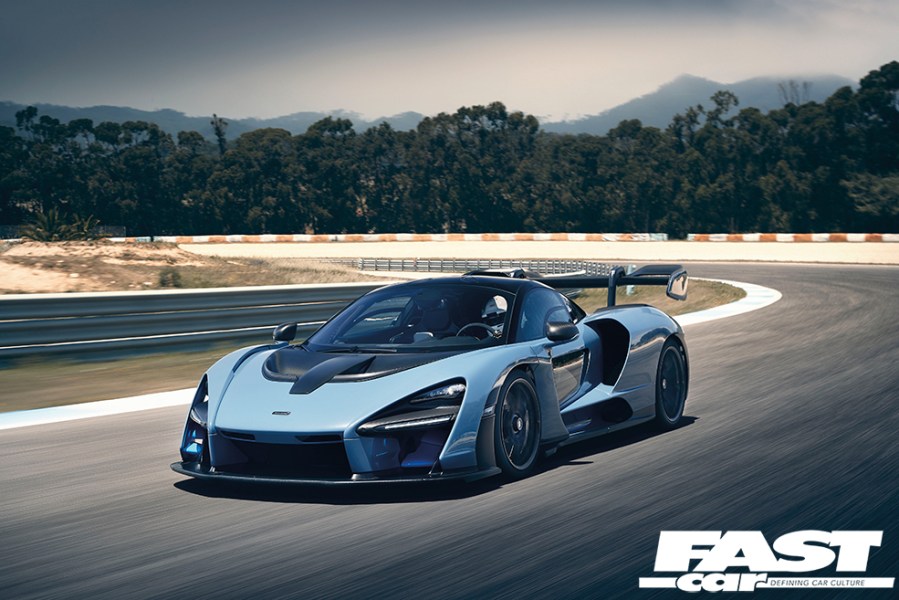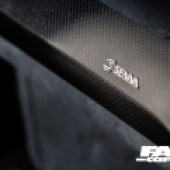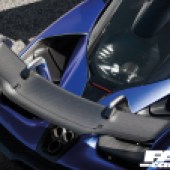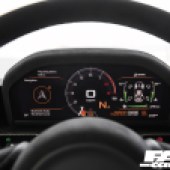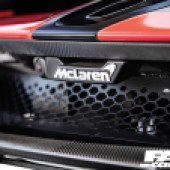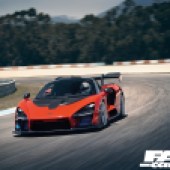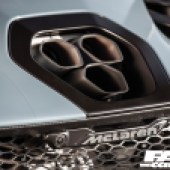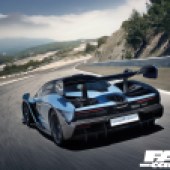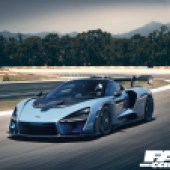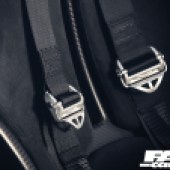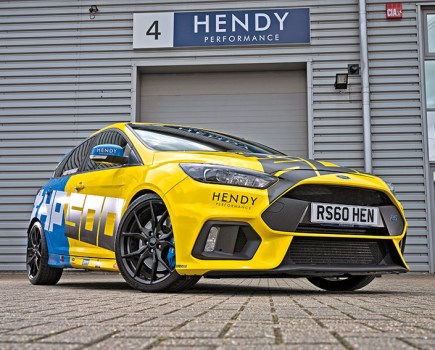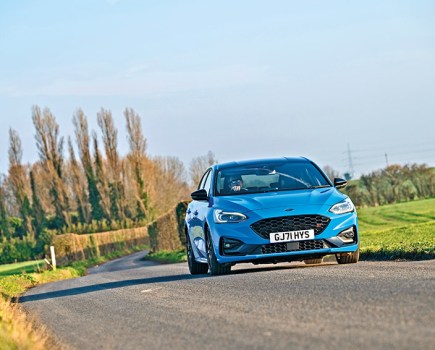When McLaren decided to build a hypercar, the aim was high, the challenges – including making it road legal – were prodigious. Then the company raised the bar even further, naming it the McLaren Senna after one of the most uncompromising, controversial and spectacularly fast race drivers who ever lived. Now that calls for both arrogance and supreme confidence. Ayrton Senna would have approved.
Review taken from Ultimate Supercar. Words: Richard Aucock.
When they saw the famous yellow helmet in their rear-view mirrors, other drivers reportedly would take heed. Ayrton Senna didn’t need blue flags. One look at him, and you just knew. The McLaren Senna is like that, too. Just one look tells you this thing means business.
Ironically, when it was revealed, after being debuted at McLaren’s Christmas party for owners, there was a mini meltdown over the car’s styling. This was not your conventional hypercar beauty, McLaren appeared to have given us a racing car with number plates, designed for one of those occasional times when the regulations seem to encourage ugly cars (2014 F1, anyone?).
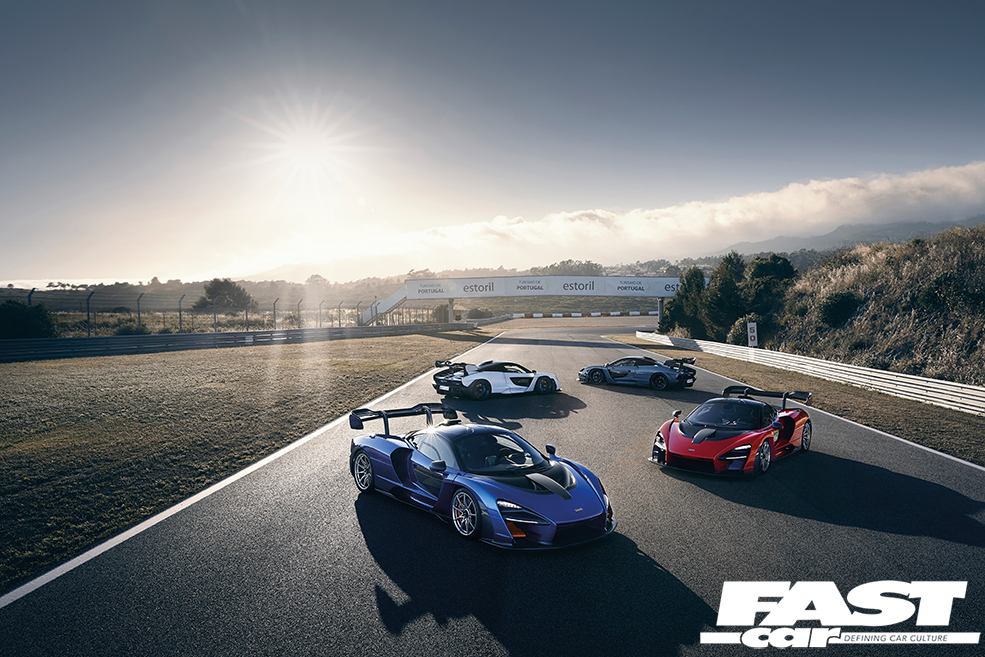
Yet here we are at Portugal’s Estoril race circuit, standing and staring at a remarkable line-up of McLaren Sennas in the pitlane, and ugliness is the last thing on our mind. It may not be a conventional beauty, but that doesn’t stop it looking incredible. Right now, there is no more purposeful road car on the planet.
Why Portugal? Because it was the scene of Senna’s first F1 victory, way back in 1985 (yes, it was in a Lotus, explaining the lack of pictures posted around the racetrack, but fair play to McLaren Automotive for still being willing to make the link). Estoril doesn’t seem to have changed much since then – there’s none of the sophistication you get at Silverstone – but we’re not here to go sightseeing. We’re here to be among the first people in the world to drive the showroom-ready McLaren Senna.
Five hundred of them will make their way to customers, and each costs £750,000. The Senna is billed as the world’s most awesome track-day machine, a hypercar to slay things such as the Ferrari FXX range, Aston Martin Vulcan and Lamborghini Sesto Elemento. But unlike them, or indeed the upcoming Brabham BT62, the Senna can be driven to and from the track. It’s road-legal. And this is a fact McLaren is inordinately proud of.
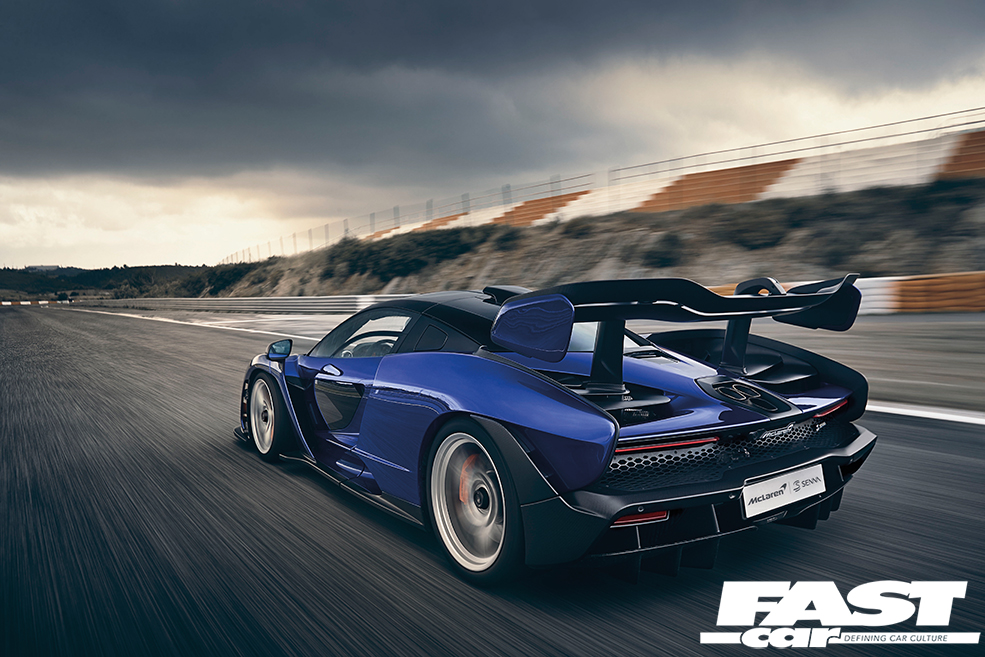
McLaren Senna: This is a road car
Project manager Ian Howshall runs me through just what an achievement this has been. Designing the body so that it passes all relevant worldwide pedestrian safety regulations, for example. Making sure it meets all necessary fuel economy and emissions laws. Even simple things like getting the interior ergonomics spot-on, or making sure the front nose lift function would be able to deal with speed bumps. McLaren could have cut corners and made the Senna track-only, but it didn’t.
And the “high proportion” of owners who will drive it to track days will appreciate this, added Howshall. He expects lots of buyers to take advantage of not needing a trailer and use their Senna more frequently on the circuit than they might have done otherwise. Our circuit time was approaching, too. But first, the briefings.
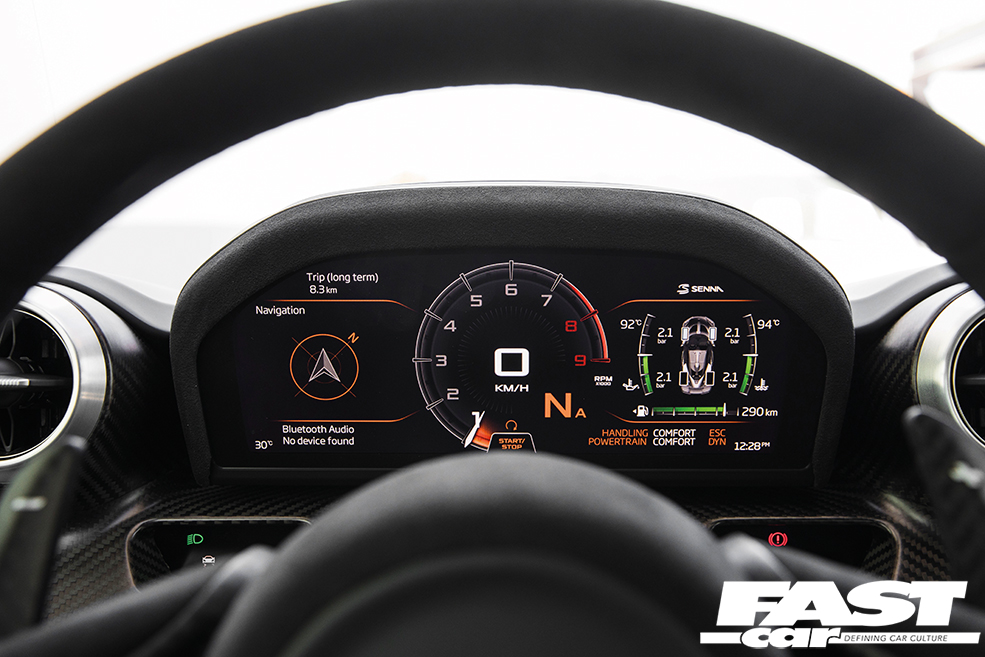
The previous night, we’d had dinner with the McLaren execs, who reminded us about the ‘three 800s’: that’s 800hp, 800Nm of torque (519lb ft) and 800kg of downforce at 155mph. The latter is the most remarkable, particularly as that’s why the Senna looks how it does. It was essentially designed around its aerodynamic demands first and styling then drawn on top. Any swipes of the pen that compromised aerodynamics were not allowed. They don’t worry about making people weak at the knees with beauty on the racetrack; this time, the same applied for road cars.
In the pitlane the next day, Ian shows me some of the details in more depth. Starting with the Senna’s incredible rear wing. It’s massive, like a racing car, but even better than a racer’s, it’s adaptive, constantly altering its profile when on the move to maximise and balance downforce. The 800kg peak is one chosen by McLaren, says Ian: it could generate even more, but 800kg gives the best balance. Thus, when you hit 155mph, it starts to peel off downforce to maintain this rather than increase it.
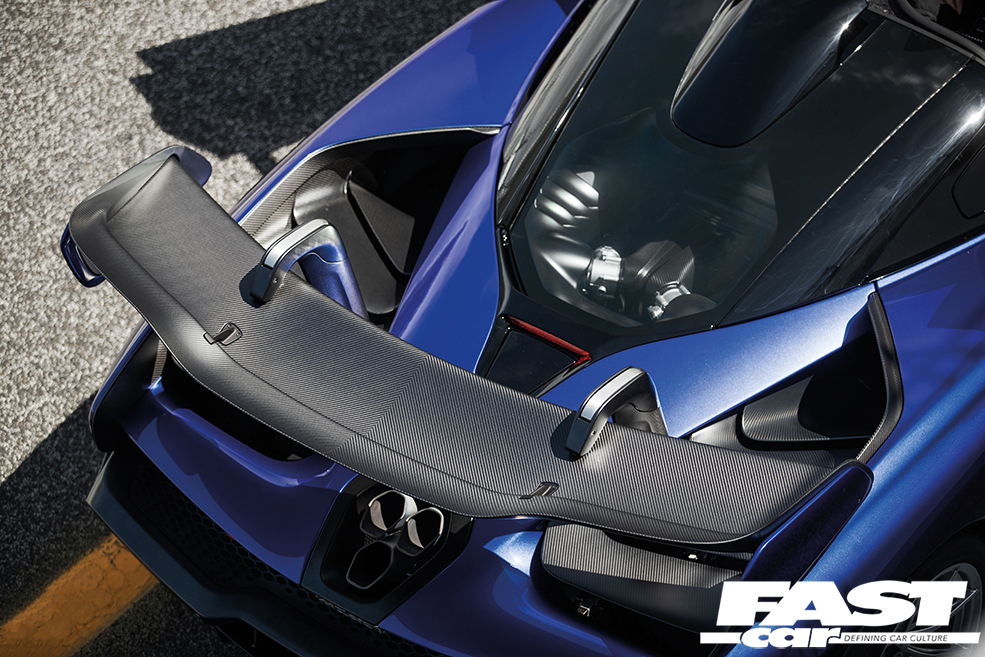
Yes, the McLaren Senna produces downforce to spare.
The wing’s amazingly light too, he says: less than 5kg. Other ultra-lightweight components help make this the lightest McLaren since the original F1, which is why it can accelerate from zero to 124mph in 6.8 seconds, and then go back to zero in 100 metres. Oh, and the carbon ceramic brakes are so powerful, McLaren had to design all-new calipers. The original ones were twisting under the loads generated.
McLaren being McLaren, I had an allotted time to begin my track drives at Estoril. A lady came over and told me it was time to change into my overalls (McLaren-branded, waiting in a locker with my name on it – all about the details). Notepad away, on with the race suit, and into… a McLaren 720S, laid on to help us familiarise ourselves with the course and warm ourselves up. Yes, a supercar was, for today only, a ‘warm-up car’. It’s like learning to play football by running out for a Premier League game.
My instructor for the day was charming racer Jamie Wall. He talked me around Estoril in the 720S, then it was back to the pits for a breather, before heading out in the Senna. Which left just enough time for the nerves to boil nicely. The 720S felt mighty fast enough. What on earth would the McLaren Senna be like? At last, it was time to find out.
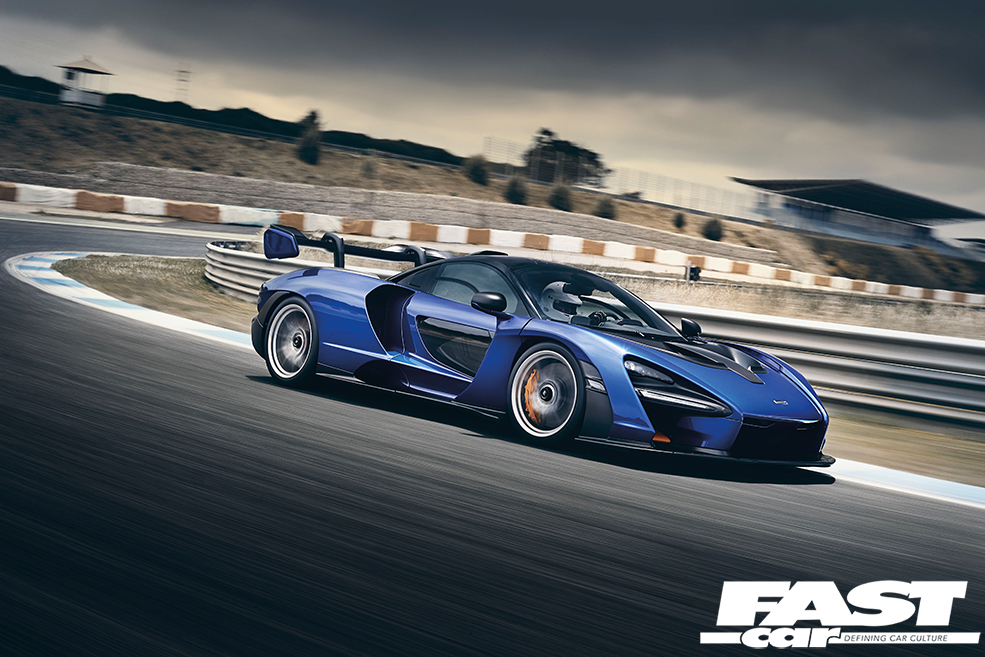
This is a track car
Like all McLarens, the Senna has dihedral doors. Open them, and the tread of the front tyre is exposed. It’s a cool touch. Much of the roof opens up too, making getting in a matter of walking forwards then carefully lowering yourself into the stiff-shell bucket seats. A man buckles the four-point harness, then closes the door for me (I’m in so tight, I can’t reach it). He does the same to Jamie, meaning I’m sat in silence for a few seconds, surveying the button-light interior, the McLaren-trademark superb front visibility, the fact I feel I’m sat in a road car that could take on Le Mans.
Finally, Jamie’s intercom is connected and I hear his reassuring words again. “Ready?” The starter for a Senna is mounted on the roof console, along with the electric window controls and drive mode buttons. “People will be driving it with a helmet on,” Ian would later explain. “This has a restricted field of vision, so they won’t easily be able to look down.” McLaren’s thus raised stuff up to help in the heat of the moment. It also feels very cool to reach up to the roof to start it.
The rawer, more menacing noise from the 3.8-litre twin-turbo V8 felt immediately more purposeful. So too the extra vibrations: there’s less comfort-focused sanitisation going on here. As we rumble down the pitlane, the setup feels tauter, jigglier, more track-ready. Exploding onto the circuit for the first time, all howling roar from the engine and ridiculously powerful acceleration, was mind-warping. Thank goodness our warm-up car had 720hp.
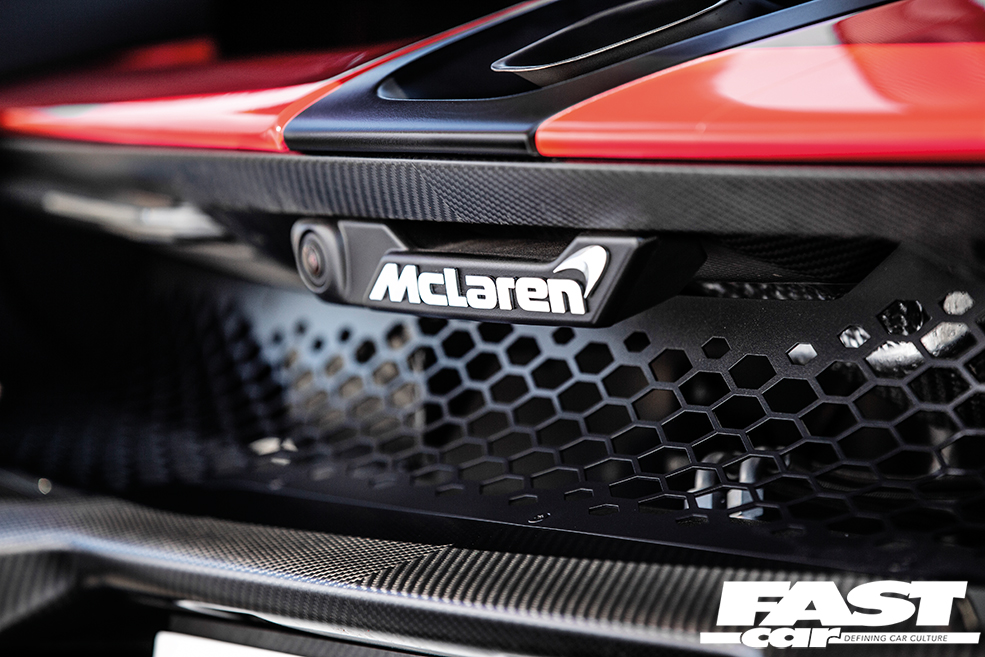
Thing is, with Jamie’s guidance, I’m quickly able to start taking it all in, and it soon starts to feel other-worldly. That’s because of the focus, the attitude, the uncompromising track orientation, but also because of something you only generally feel in racing cars: downforce. After a few laps, my confidence starts to build further, so I take corners faster, and better, on the correct line and in the correct gear. And the Senna starts to feel transcendental.
It’s addictive, the joyous sensation of serious downforce, once you experience it. You simply want more – and you can have more, if you go faster, drive better. You’re travelling at insane speeds, yet the car feels sucked down and planted to the tarmac, without a trace of flighty nervousness, taking every last bit of squidge away and, of course, pressing the wheels hard into the ground, so the feedback and feel you get from the tyres is off the scale.
It’s sublime. And the Senna’s still working hard to stay on your side as downforce peels off under braking. The rear wing turns into an airbrake, then alters its profile on corner turn-on to stabilise the rear and help it pirouette into the bend with the grace and precision of an Olympic ice skater. Get early on the power to neutralise the balance, then drive out and quickly gather up the speed again to get your hit of downforce.
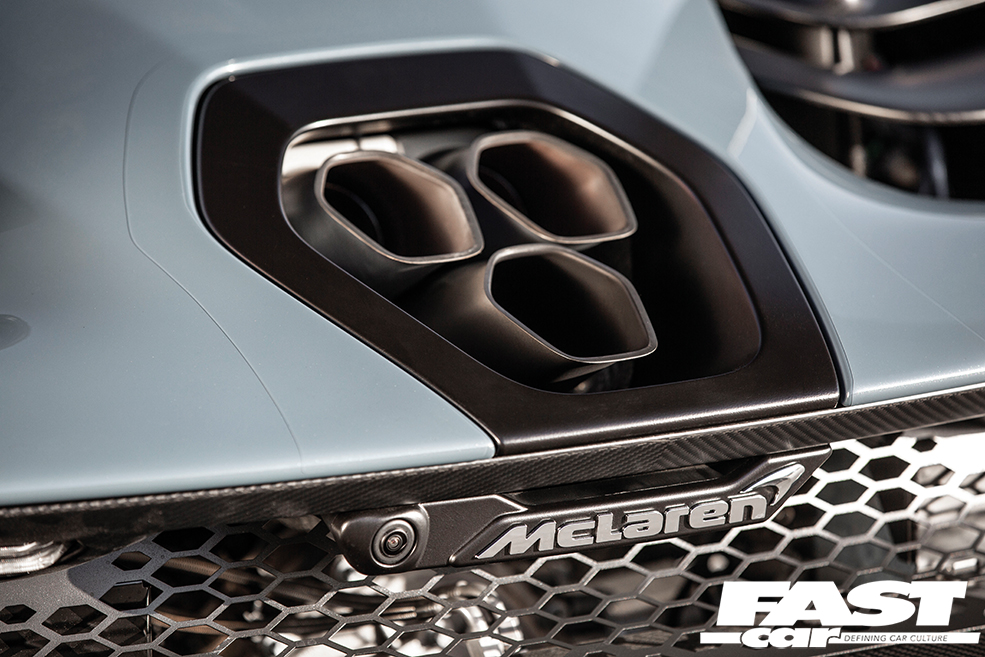
Ludicrously powerful
This is not quite the most stupendous part of how the Senna drives, though. The brakes are. They are ludicrously powerful – genuinely, like racing car brakes, that let you stamp on them as hard as you dare and yet still pull up short.
Jamie had me braking later and later, to the point of feeling genuine terror the split-second before I kicked the pedal to the floor. Which dispersed as quickly as it rose, once I realised I was once again pulling up short. And the carbon-ceramic anchors are so tireless, you can do this time and again without feeling a trace of fade (advanced materials mean they run 150 degrees C cooler than normal ceramics).
It was time to cool down and head back in. There would be another run later, but McLaren felt it wise to give us chance to digest things first. Out came the notepad for a download. My hand’s shaking, and it wasn’t after the 720S.
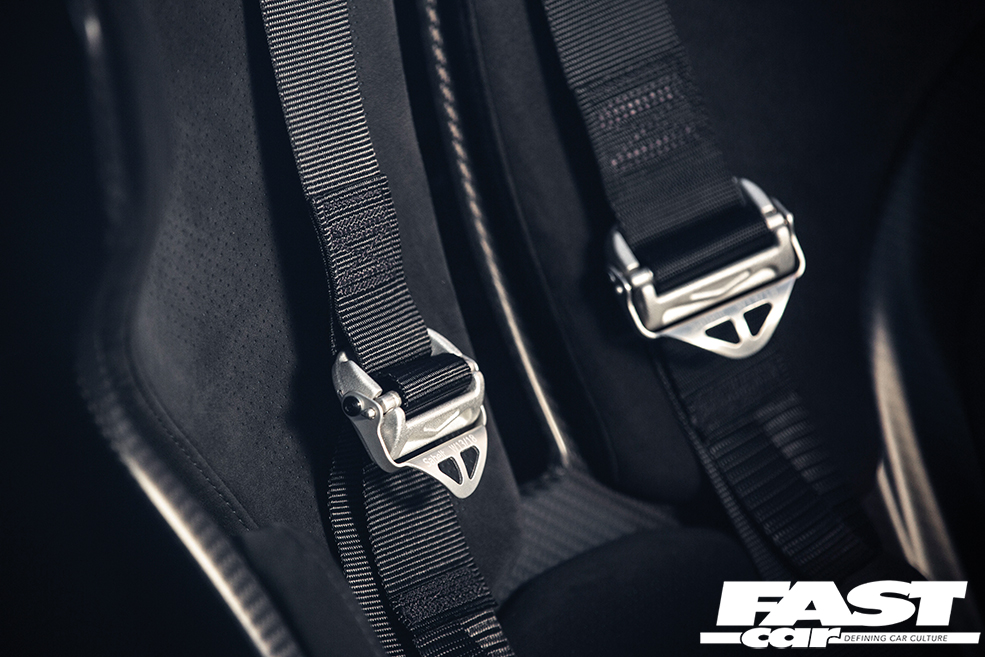
Compared to that, compared to a ‘normal’ supercar, the Senna has amazed in how step-beyond its abilities are, how quickly it accelerates, and corners, and particularly slows down, but most of all, how it gives laymen like me even more confidence and reassurance out on-track. I’m already musing on how to argue that £750,000 is a bargain. The Senna feels a million-pound machine or more.
The next session is glorious. Physically, it’s even more demanding, because I sort of know what I’m doing, so can start dialling up the G-forces the McLaren Senna’s capable of (2G under braking is particularly epic). With confidence comes the willingness to try a few things too, like seeing how early in the corner you can get on the power, and thankfully then catching the slide with a positive dab of opposite lock. Then, because of this, feeling enthused to chuck the Senna about in the lower-speed stuff, to see how a hypercar can also feel like a kart.
And then, on the final run down the pit straight, braking absolutely as late as possible, to see how the terror of running out of road transitions into the joy of judging braking spot-on, and rolling into the corner on the anchors with what, to me, seemed like perfection. Time to head back to the pits. The boy’s getting brave in the fully-sold-out £750k McLaren.
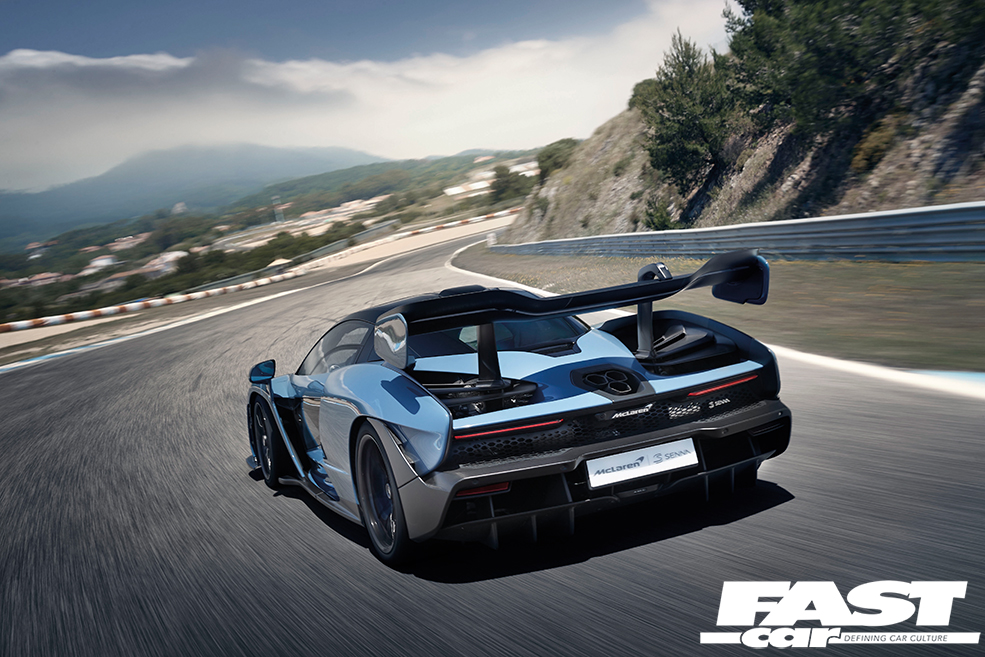
It’s amazingly light and airy in there, with the huge windscreen and panels in the tops of the doors letting light flood in. This one has the optional clear-glazed panels in the doors too, which I hadn’t really noticed as my mind was elsewhere, but which Jamie insisted were, with experience, useful. “The offside one is great for helping you hit corners with amazing accuracy.” Not that this car’s namesake would need any help here.
There’s never been a driver with quite the presence and aura of Ayrton Senna. Not even Michael Schumacher quite had the mystique of the famous Brazilian. So, naming a car after him was risky. After all, they made a special edition Fiat Seicento Sporting named after Schumacher, so it’s a trend not rich with successes.
McLaren’s done it, though. It’s created an outstanding car that’s a huge step on from even its latest quite remarkable supercar: the 720S. It’s like making the move from GP2 into F1 – the basics are the same, but the limits and abilities are wildly higher. Like Senna on-track, best not get in its way.
Tech Spec: McLaren Senna
Engine: Twin-turbo V8, mid-mounted, 3,994cc
Transmission: Seven-speed semi-auto, rear-wheel drive
Chassis: Carbon fibre tub and body panels
Suspension: Double wishbones front and rear, interconnected hydraulic dampers
Wheels: 19in (front), 20in (rear)
Tyres: 245/35 R19 (front), 315/30 R20 (rear)
Brakes: 390mm carbon-ceramic discs front and rear
Power: 800hp@7,250rpm
Torque: 590lb ft@5500rpm
0-62mph: 2.8 seconds
Top speed: 208mph
Fuel economy: 22.8mpg
CO2 emissions: 280g/km
Price: £750,000

